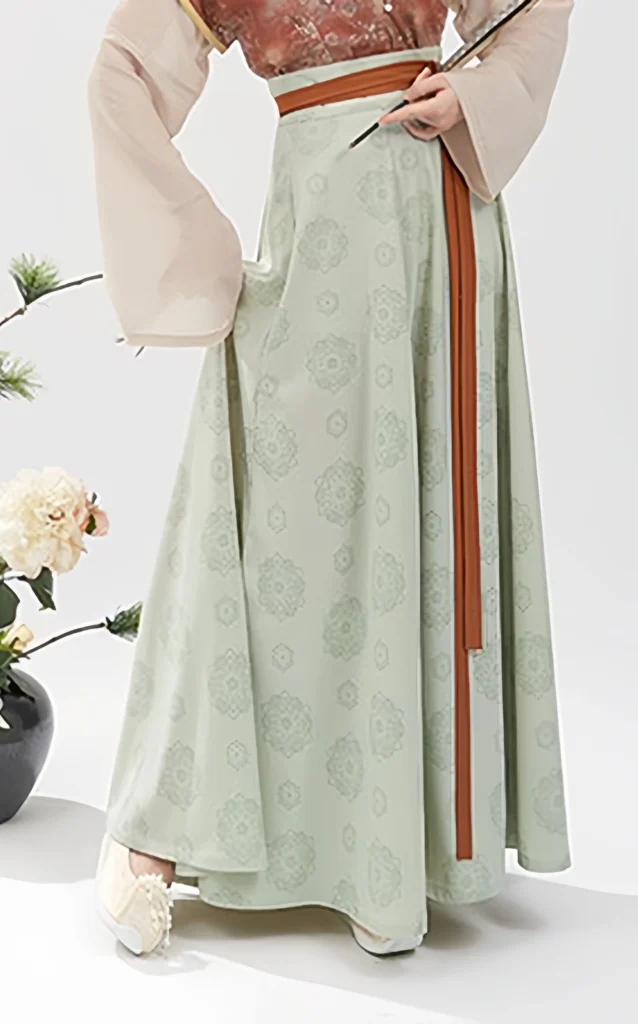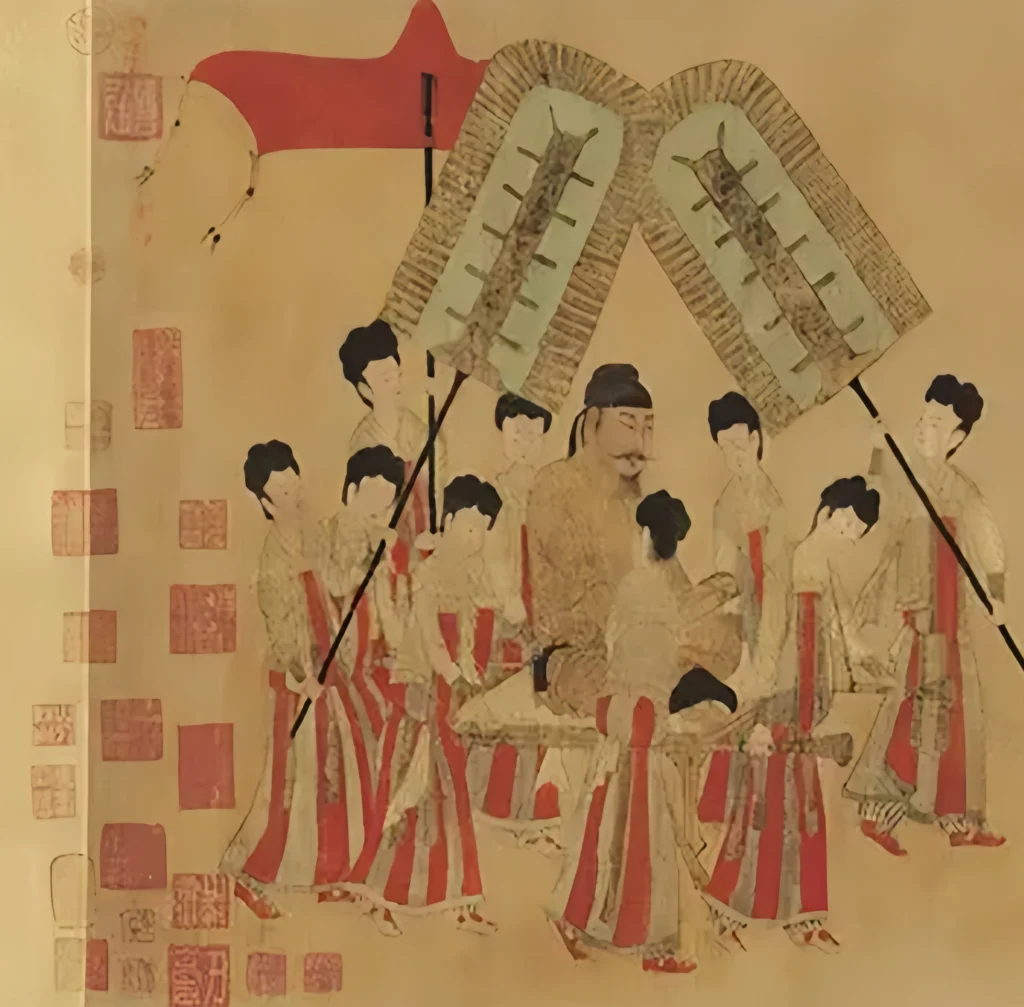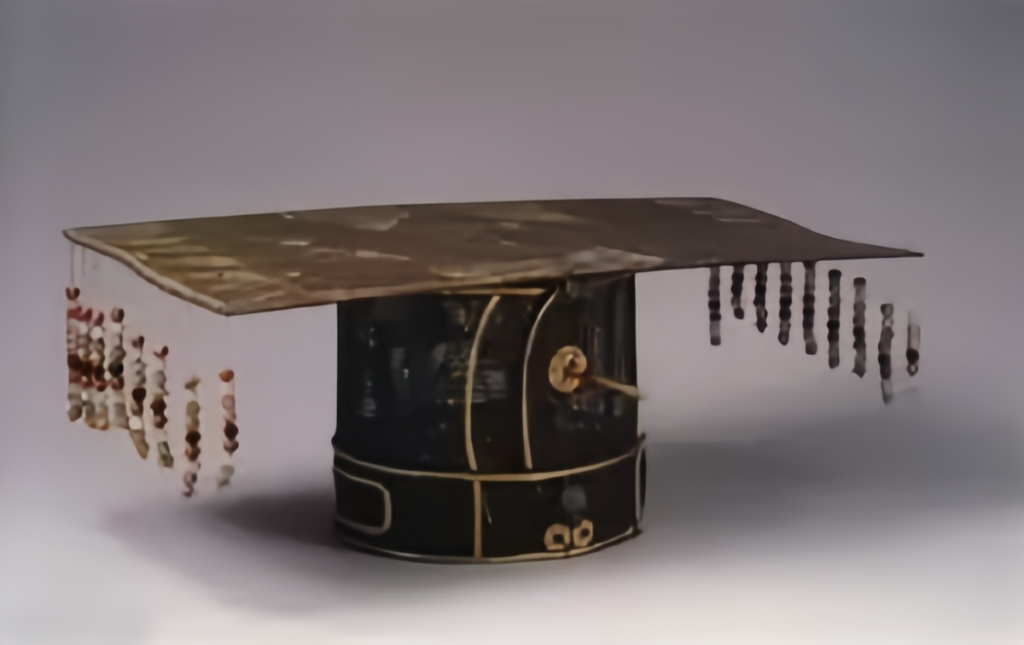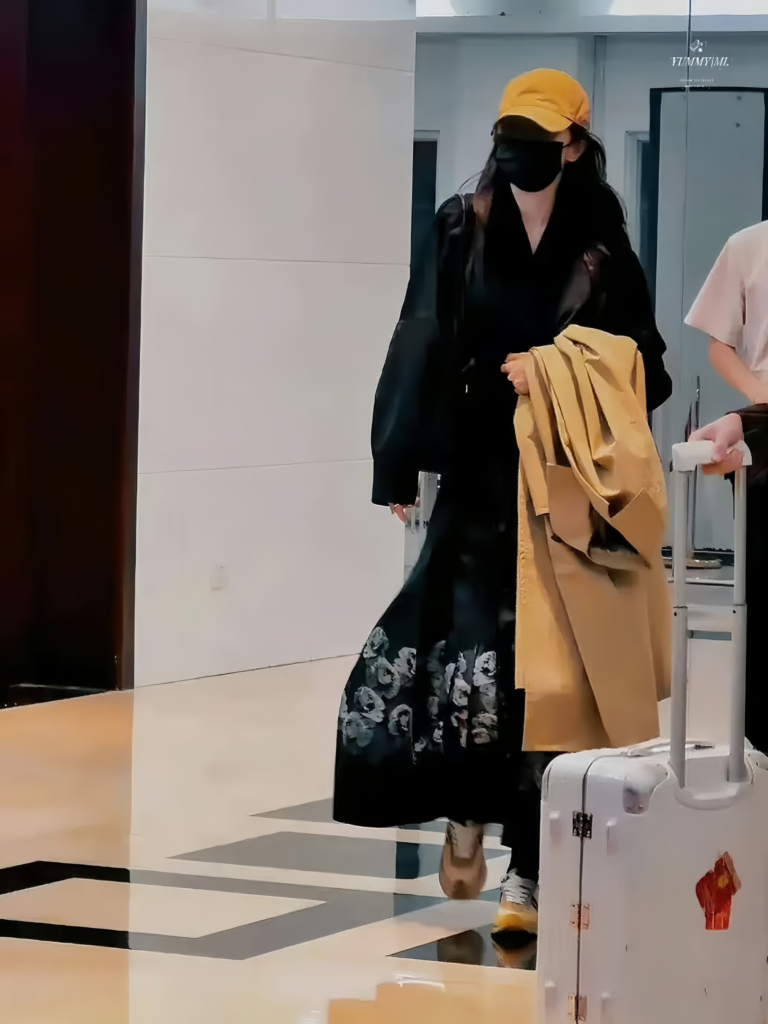Hanfu Knowledge: What’s a Po Skirt?

The Po skirt, a stunning traditional Hanfu skirt, captivates with its unique trapezoid panel skirt design, rooted in Tang dynasty fashion. Defined by its intercolor stitching and flowy silhouette, this skirt style, popular from the Wei and Jin to Sui and Tang eras, blends elegance and functionality, as seen in historical textiles.
What’s a Po Skirt?
Definition and Origins
Po Skirt = Jiao Yu Skirt ≠ Ripped Skirt ≠ Patchwork Skirt
The Po-Skirt, also called Jiao Yu Skirt or Jiao Shu Skirt, is a traditional Hanfu skirt style defined by its trapezoid panel stitching technique. Historical texts and archaeological finds trace it back to the Pre-Qin period, with widespread popularity from the Wei and Jin to Sui and Tang dynasties. The “Po” in its name doesn’t mean “broken” or “torn”—it refers to cutting fabric into trapezoid pieces and sewing them together. Picture a skirt made by slicing fabric into top-narrow, bottom-wide trapezoids and stitching them side by side. The term “X Po” indicates the number of panels used, like a “Six Po-Skirt” with six panels or a “Twelve Po-Skirt” with twelve. The panel count is usually an even number.
Historical Evolution and Design Features
Wei and Jin to Tang Popularity
In the Wei and Jin eras, Po-Skirt were mostly worn waist-high, often with delicate floral hems. By the Tang dynasty, they shifted to chest-high, emphasizing a flowy, ethereal vibe. Tang records like Old Tang Book and New Tang Book mention “Six Po” and “Twelve Po” skirts, noting their cut and links to social rank (commoners faced panel count limits).
Tang Po-Skirt used silk fabrics like ling or gauze, with intercolor stitching (alternating colors like red-white or green-white) for a slimming, vibrant look. An eight-panel skirt with gradient brocade from Turpan, Xinjiang, showcases this, woven with eight-colored warp threads for a luxurious, elegant effect.
Structural Features
- Each Po-Skirt panel is a narrow-top, wide-bottom trapezoid (straight or isosceles), stitched to form a natural A-line silhouette that hugs body curves while allowing easy movement and a slimming effect.
- Some skirts add I-shaped pleats or live pleats at seams, like the “Four Po Three-Pleat Skirt” from a Southern Song tomb, using pleats to enhance fit.
- Po-Skirt are narrow at the top and wide at the bottom, similar to modern A-line skirts, but Hanfu Po-Skirt are more drapey and fluid. In Wei and Jin, they often used two or more colors for loose, bold stitching.

Crafting and Wearing
Cutting and Stitching
- To make a Po-Skirt, fabric is cut into multiple trapezoid panels, with slanted and straight edges sewn alternately to form a wrap-around skirt body. An eight-panel skirt, for example, uses eight pieces, with a hem that fans out into a 3-meter-plus circle.
- Tang artisans often trimmed hems (cutting jagged edges) and adjusted warp-weft directions for better drape, avoiding messy pleats.
Wearing Styles
- Tang women typically wrapped and tied Po-Skirt, looping the waistband one-and-a-half to multiple times for a layered, twirling hem effect. Some styles used shoulder straps to secure chest-high skirts and prevent slipping.
- In the Sui and Tang eras, Po-Skirt stripes grew finer and denser, with richer, bolder color clashes becoming a trend. Check out the intercolor Po-Skirt worn by a lady in Yan Liben’s Emperor Taizong Receiving the Tibetan Envoy.

Po Skirt vs. Other Hanfu Skirts
Compared to Pleated Skirts
- Pleated skirts rely on uniform pleating, while Po-Skirts use trapezoid stitching for natural pleat volume, offering a slimmer fit and less fabric waste.
Relation to Three-Pleat and Hundred-Pleat Skirts
- Three-pleat skirts (like the Song dynasty’s “Four Po Three-Pleat Skirt”) are a Po-Skirt offshoot, with three I-shaped pleats at the waistband.
- Song’s hundred-pleat skirts (baidie qun) feature smooth ends with pleats in the middle, unlike Po-Skirts’ panel-based design.
Choosing a Po Skirt
Po-Skirts come in solid color or intercolor styles. Solid color Po-Skirts are uniform and great for daily wear. Intercolor Po skirts mix vibrant hues for a bold, eye-catching look. For intercolor skirts, waist-high styles are more slimming than chest-high, and more panels (like eight) look sleeker than fewer. Most eight-panel skirts on the market nail this balance.

Po Skirts in Modern Hanfu
Today’s Hanfu fans recreate Po skirts with traditional trapezoid cuts, using chiffon or silk to mimic Tang’s airy vibe. Brands also offer modern twists, like hidden shoulder straps or adjustable ties, blending classic shapes with practical wearability.
Po Skirt vs. Other Traditional Hanfu Skirts
Unlike pleated skirts, the Po skirt’s trapezoid panel skirt design minimizes fabric waste while offering a slimmer fit. Song dynasty’s “Four Po Three-Pleat Skirt,” with I-shaped pleats, evolved from this style, distinct from hundred-pleat skirts, per Smithsonian’s Freer Gallery.
Modern Revival of the Po Skirt
Today, Hanfu enthusiasts revive the Po skirt using chiffon or silk, incorporating adjustable ties for wearability. Intercolor stitching remains popular for its vibrant appeal, blending Tang dynasty fashion with modern flair, as seen in designs from contemporary Hanfu brands.





Responses